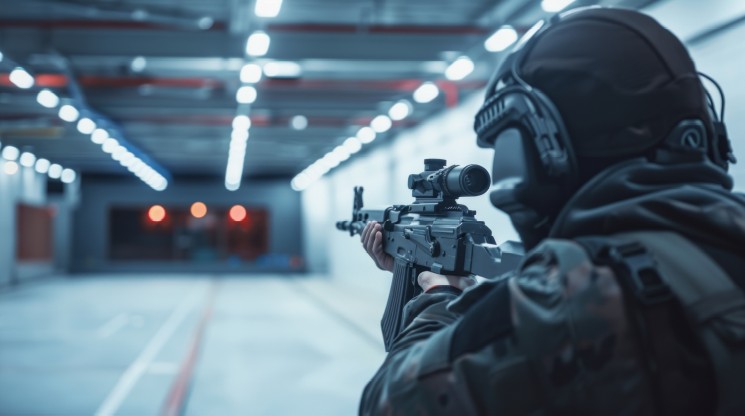In high-stakes environments, whether in military operations, law enforcement scenarios, or competitive sports, decision-making under pressure is a critical skill. Tactical training is designed to sharpen this ability, ensuring that individuals and teams can respond effectively to rapidly evolving situations. However, one of the key challenges faced during such training is cognitive load—the mental effort required to process information, make decisions, and execute actions. Brent Yee Suen emphasizes that understanding how cognitive load influences decision-making is essential for designing effective training programs and improving real-world performance.
Understanding Cognitive Load
Cognitive load refers to the amount of mental effort required to process information and complete a task. Psychologists have identified three primary types of cognitive load:
- Intrinsic Load – The inherent complexity of the task itself. For example, learning a new tactical maneuver requires mental effort simply because of the difficulty of the skill.
- Extraneous Load – Unnecessary distractions or inefficient instructional methods that make learning more difficult. For example, poor communication during training can increase cognitive strain.
- Germane Load – The beneficial cognitive effort that helps in learning and skill development. When training is structured effectively, this type of load enhances understanding and decision-making.
In tactical training, balancing these types of cognitive load is crucial. If the overall cognitive demand is too high, decision-making becomes impaired, leading to slower reactions, errors, or even complete breakdowns in performance.
Cognitive Load and Decision-Making in Tactical Scenarios
Tactical situations require individuals to process multiple streams of information simultaneously. For example, a police officer responding to an active shooter situation must evaluate the threat, assess bystander safety, communicate with team members, and make rapid decisions—all under intense stress. Similarly, a military squad operating in a hostile environment must adapt to new intelligence, navigate terrain, and respond to enemy actions with precision.
When cognitive load exceeds an individual’s ability to process information efficiently, decision fatigue sets in. This results in:
- Slower Response Times – Overwhelmed individuals take longer to assess a situation and act.
- Tunnel Vision – Excessive cognitive load can cause focus to narrow, leading to missed cues in the environment.
- Reduced Working Memory Capacity – The brain struggles to retain and process new information, making it harder to adapt to evolving scenarios.
- Poor Risk Assessment – Under heavy cognitive strain, people may default to impulsive or overly cautious decisions, both of which can be detrimental.
The Role of Stress in Cognitive Load
Stress plays a significant role in tactical decision-making. In high-pressure situations, the body’s fight-or-flight response activates, leading to increased heart rate, adrenaline release, and heightened alertness. While some stress can enhance performance, excessive stress combined with high cognitive load can be detrimental. Studies have shown that stress impairs working memory and executive function, making it harder for individuals to think clearly and make sound decisions.
In tactical training, instructors must account for this by gradually increasing stress exposure in controlled settings. This approach allows individuals to develop resilience and learn how to manage cognitive load effectively under pressure.
Strategies to Optimize Decision-Making in Tactical Training
To enhance decision-making under cognitive load, training programs must incorporate techniques that improve mental resilience, information processing, and situational awareness. Some key strategies include:
1. Progressive Training Complexity
Training should start with simple drills that minimize cognitive load and gradually increase in complexity. This helps individuals build confidence and skill before being exposed to high-pressure situations.
2. Scenario-Based Training
Realistic simulations, such as force-on-force exercises, emergency response drills, or combat simulations, help trainees practice decision-making in environments that mimic real-world challenges. Immersive training enhances information retention and improves adaptability.
3. Stress Inoculation Training (SIT)
This method gradually exposes individuals to stress in a controlled setting, allowing them to develop coping mechanisms. By training under simulated high-pressure conditions, individuals become more adept at managing stress in real-world scenarios.
4. Cognitive Load Management Techniques
Tactical professionals can improve their ability to manage cognitive load through techniques such as:
- Chunking Information – Breaking complex tasks into smaller steps to reduce mental strain.
- Pattern Recognition Training – Helping individuals recognize common tactical patterns so they can react more instinctively.
- Decision-Making Drills – Practicing rapid decision-making to improve response speed and accuracy.
5. Mindfulness and Mental Resilience Training
Practices such as breath control, visualization, and cognitive reframing help individuals stay calm under pressure and process information more effectively. Military and law enforcement training programs increasingly incorporate mindfulness techniques to enhance focus and reduce cognitive overload.
6. Leveraging Technology for Training
Advances in virtual reality (VR) and artificial intelligence (AI) are revolutionizing tactical training. VR simulations can expose trainees to high-stress environments in a safe and controlled manner, allowing them to practice decision-making without real-world consequences. AI-driven analytics can also provide feedback on reaction times, accuracy, and cognitive performance, helping individuals refine their skills.
Balancing Cognitive Load for Optimal Performance
To ensure that cognitive load enhances rather than hinders decision-making, training programs must strike a balance between challenge and skill level. The Yerkes-Dodson Law suggests that optimal performance occurs at moderate levels of stress and cognitive demand—too little stimulation leads to complacency, while excessive load leads to burnout and errors.
By designing training environments that gradually build complexity, expose individuals to controlled stress, and provide feedback on decision-making, tactical professionals can develop the mental agility needed to perform under pressure.
Cognitive load plays a crucial role in tactical training, directly impacting decision-making, situational awareness, and performance under pressure. Understanding how cognitive load affects the brain allows trainers to design more effective programs that enhance critical thinking, adaptability, and resilience in high-stakes environments. By integrating progressive training methods, stress inoculation, cognitive load management techniques, and emerging technologies, individuals and teams can develop the mental toughness needed to excel in real-world tactical scenarios.
